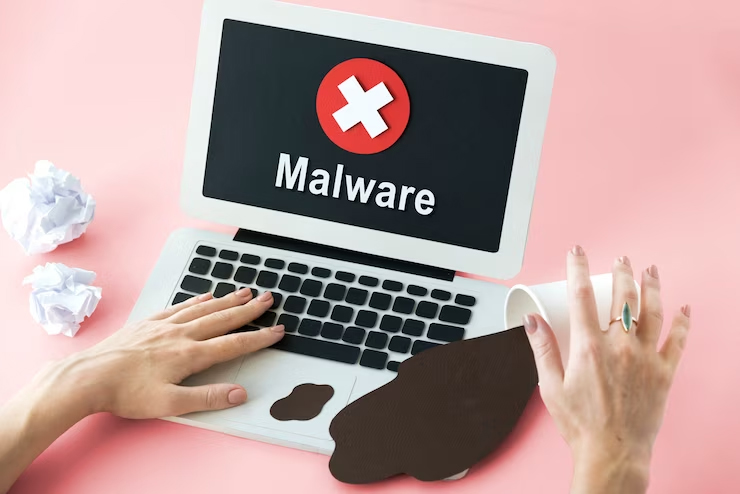The threat of computer viruses looms larger than ever before. As technology becomes increasingly integrated into our lives, the potential for cyberattacks and malware infections grows alongside it. This article aims to provide you with a comprehensive guide on how to address the issue of a computer infected with a virus. From understanding the nature of computer viruses to taking immediate actions and implementing preventative measures, Webklang will equip you with the knowledge needed to safeguard your digital world.
Understanding Computer Viruses: Unveiling the Digital Threats
- Defining Computer Viruses and Malware
Computer viruses are malicious software programs designed to replicate and spread themselves to other computers, often causing harm along the way. They fall under the umbrella term “malware,” which encompasses various forms of malicious software such as worms, Trojans, and ransomware. - The Functionality of Computer Viruses
These digital pests infiltrate systems by exploiting vulnerabilities, often spreading through infected files, email attachments, or compromised websites. Once inside, they can corrupt or delete files, steal sensitive information, and even hijack your computer for nefarious purposes.
Recognizing Infection Signs: Identifying the Telltale Indicators
- Sluggish Performance and Unusual Behavior
One of the most common signs of a virus-infected computer is sluggish performance. If your computer suddenly becomes slow, freezes, or crashes more frequently, it’s time to investigate further. Additionally, be on the lookout for unusual behavior such as programs opening and closing on their own. - Unexpected Pop-ups and Altered Settings
Another indicator is the sudden appearance of unexpected pop-up advertisements, even when you’re not browsing the internet. If your browser’s homepage changes without your consent, or if your default search engine is replaced, your computer might be compromised.
Potential Consequences of Ignoring Infections: Understanding the Risks
- Data Loss and Identity Theft
One of the gravest consequences of a virus infection is data loss. Viruses can corrupt or delete your important files, causing irreparable damage. Furthermore, some viruses are designed to steal sensitive information, including personal and financial details, which can lead to identity theft. - Disruption of Operations and Financial Losses
For businesses, a virus infection can be catastrophic. It can lead to operational disruptions, loss of customer trust, and financial damages. Recovery from such incidents can be time-consuming and costly.
Immediate Steps for Response: Taking Swift and Decisive Action
- Isolating the Infected System
If you suspect your computer is infected, the first step is to isolate it from the network. Disconnect from the internet and other devices to prevent the virus from spreading. - Scanning and Detection
Utilize reputable antivirus software to conduct a thorough scan of your system. Modern antivirus programs can identify and remove a wide range of viruses and malware. - Quarantine and Removal
Should the antivirus detect any threats, follow its instructions to quarantine and remove the infected files. Exercise caution during this process to avoid inadvertently deleting important files. - Data Backup and Recovery
Before initiating virus removal, ensure you have a recent backup of your data. This precaution guarantees that even if data loss occurs during the removal process, your important files remain secure.
Seeking Professional Assistance: Expert Intervention
- When to Seek Professional Help
While some virus infections can be resolved using antivirus software, more severe cases may require professional intervention. If you’re unable to remove the virus or if your system is severely compromised, seek the expertise of IT professionals. - The Importance of Professional Help
IT experts possess the knowledge and tools to handle complex virus infections. They can ensure the virus is completely eradicated and offer recommendations to prevent future infections.
Preventing Future Infections: Building a Digital Fortress
- Regular Software Updates
Keeping your operating system, applications, and antivirus software updated is crucial. These updates often include security patches that address known vulnerabilities. - Safe Online Practices
Exercise caution while browsing the internet. Avoid clicking on suspicious links or downloading files from untrustworthy sources. Be particularly wary of email attachments from unknown senders. - Strong Passwords
Utilize strong, unique passwords for your online accounts. Incorporate a mix of letters, numbers, and symbols to enhance security. - Reliable Security Software
Invest in reliable antivirus and anti-malware software. Choose a program that offers real-time protection and regular scans.
Conclusion: Safeguarding Your Digital Domain
In the digital age, the threat of computer viruses is a persistent reality. By understanding the nature of these threats, recognizing infection signs, and taking swift action, you can minimize the risks they pose. Remember, prevention is key, and practicing safe online habits combined with the use of reputable security software can significantly reduce your vulnerability.

